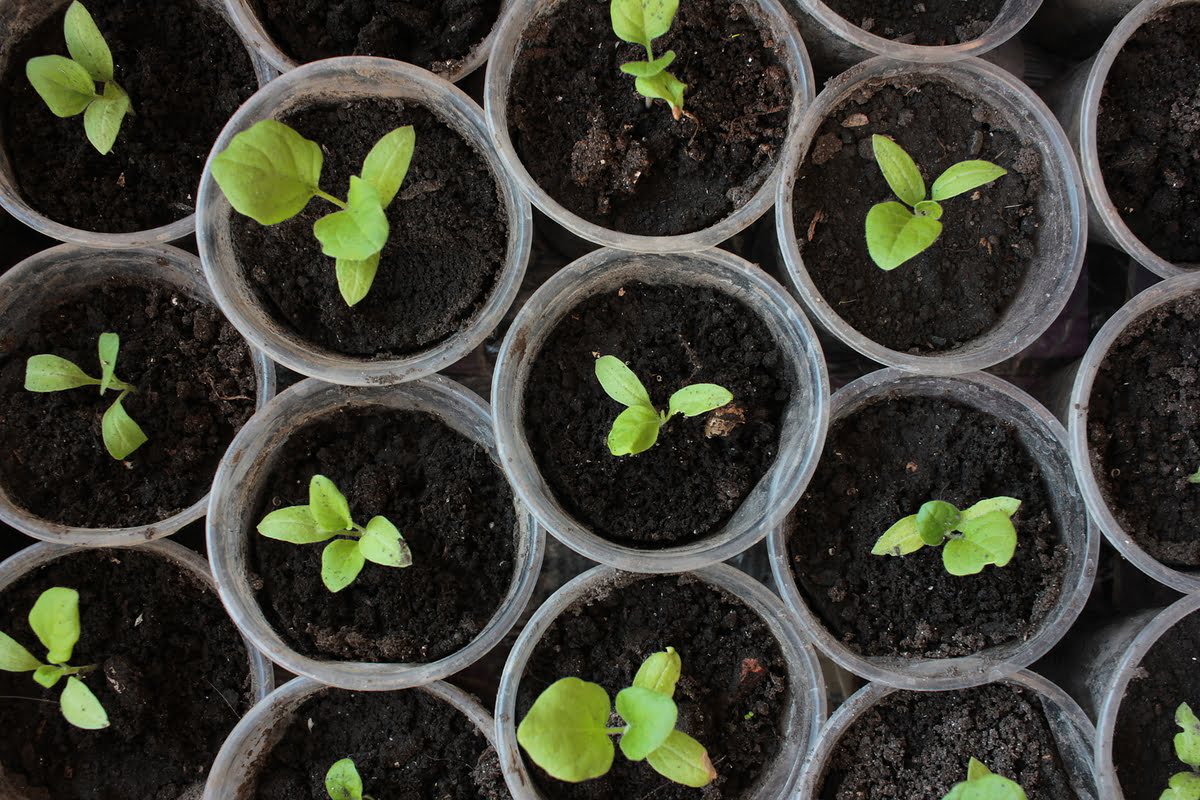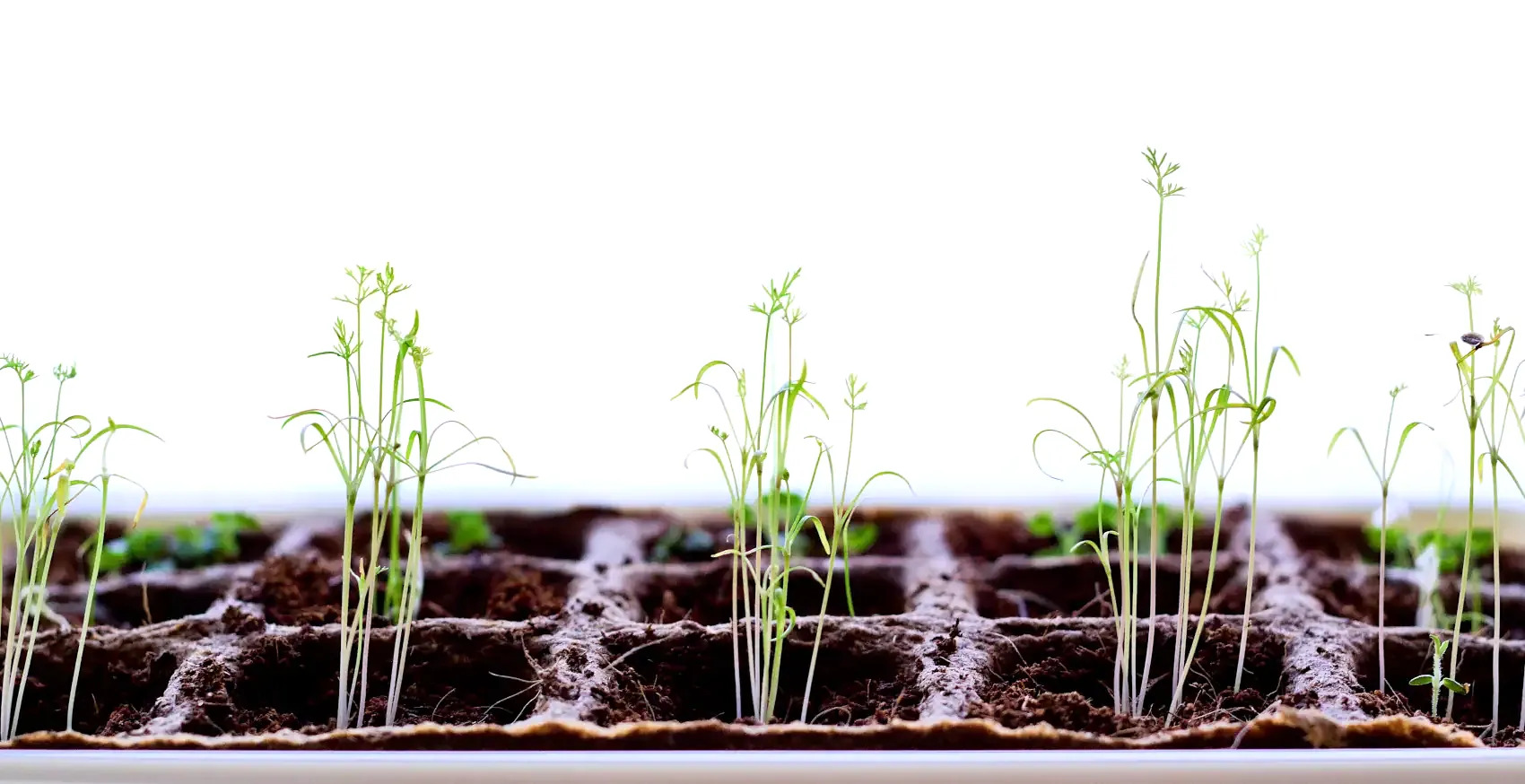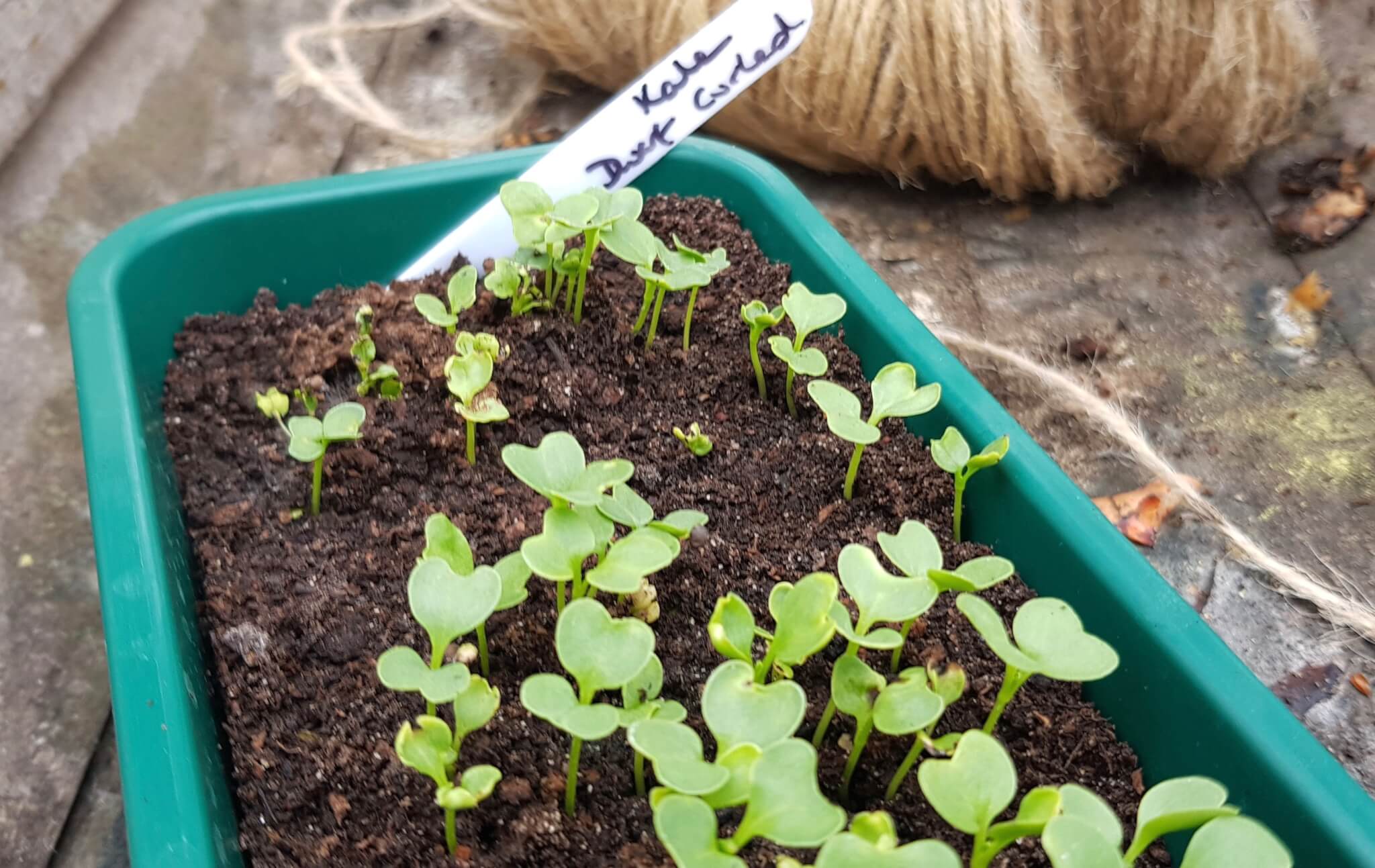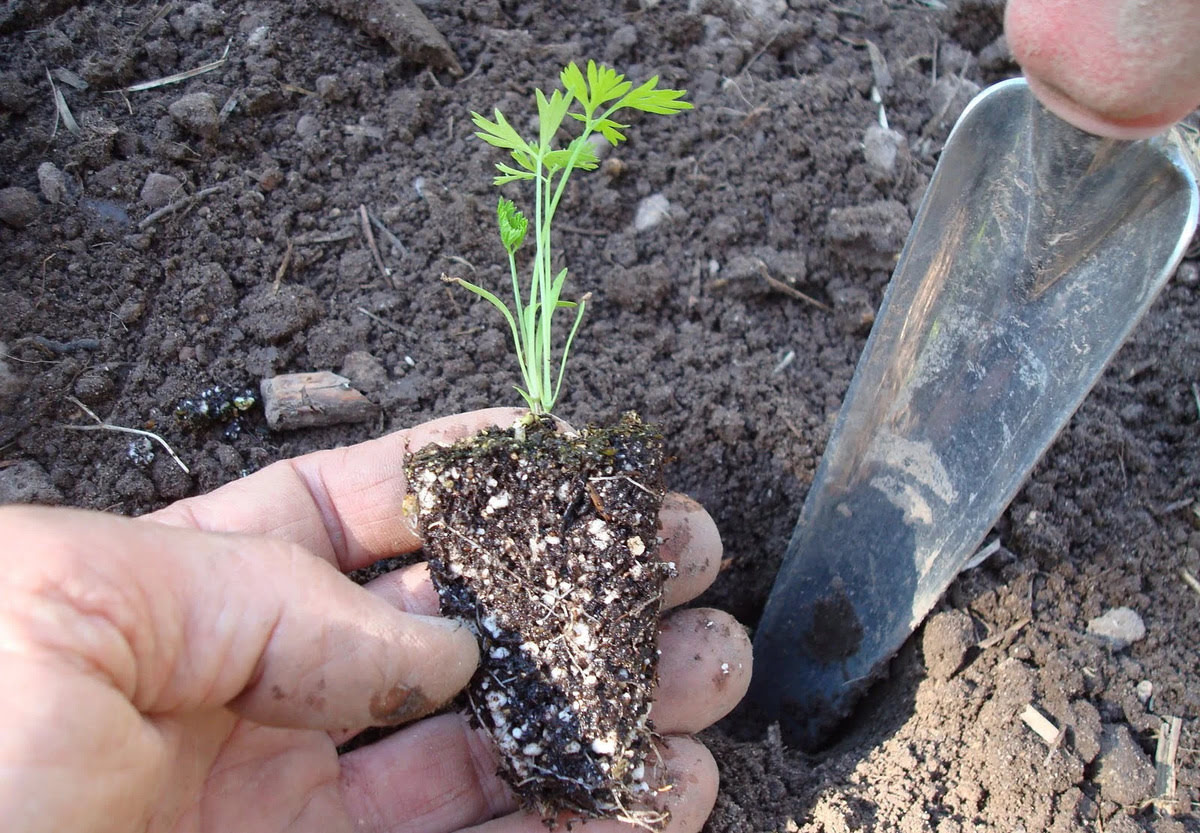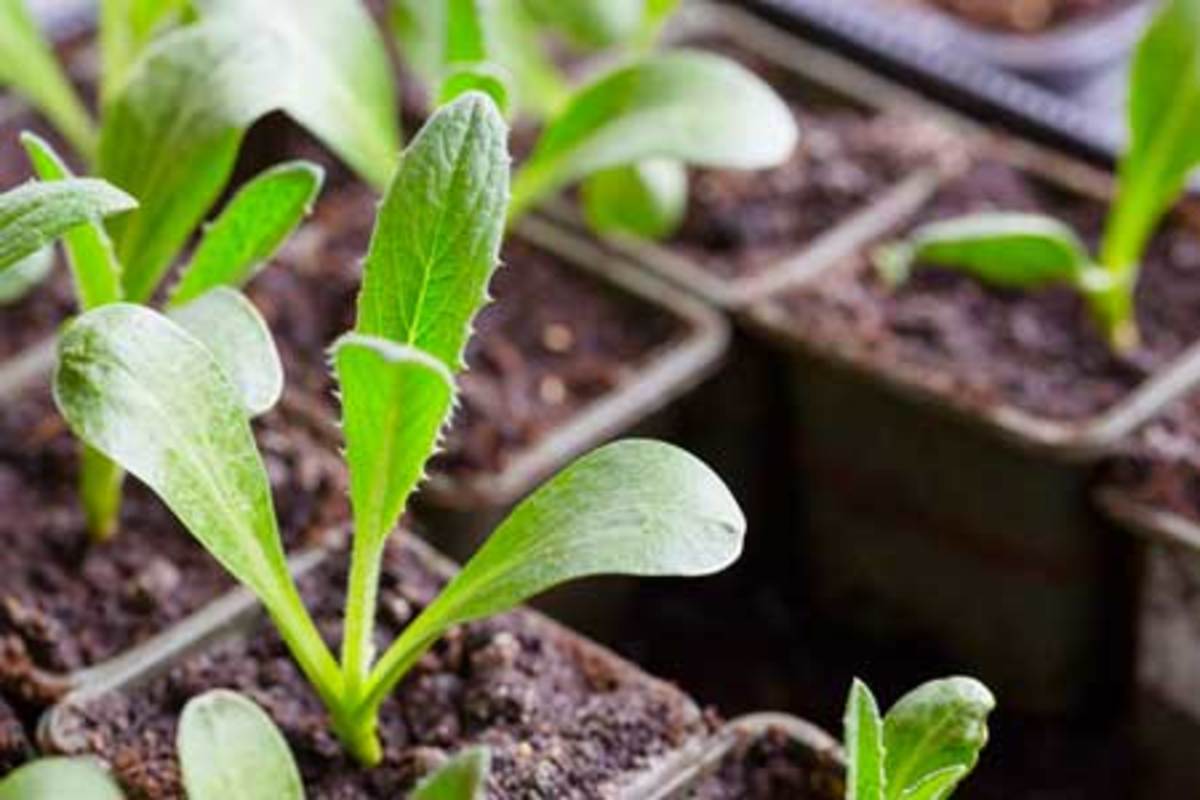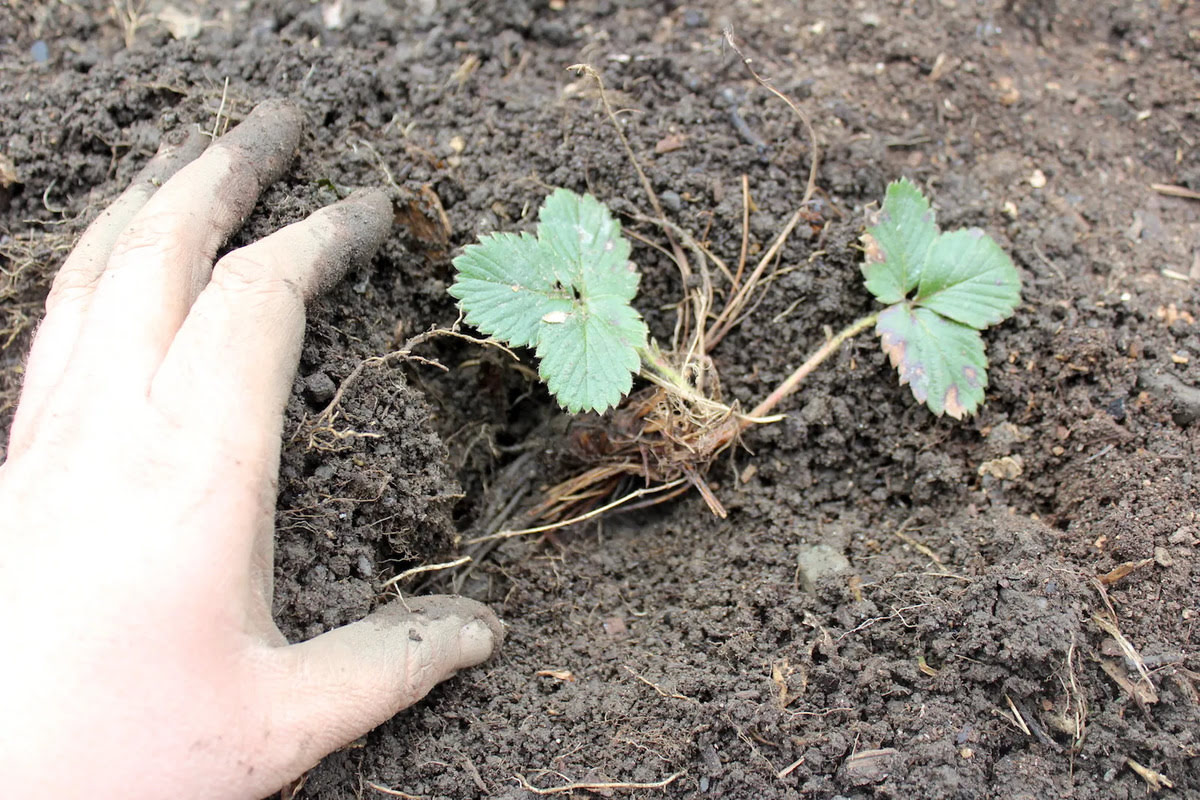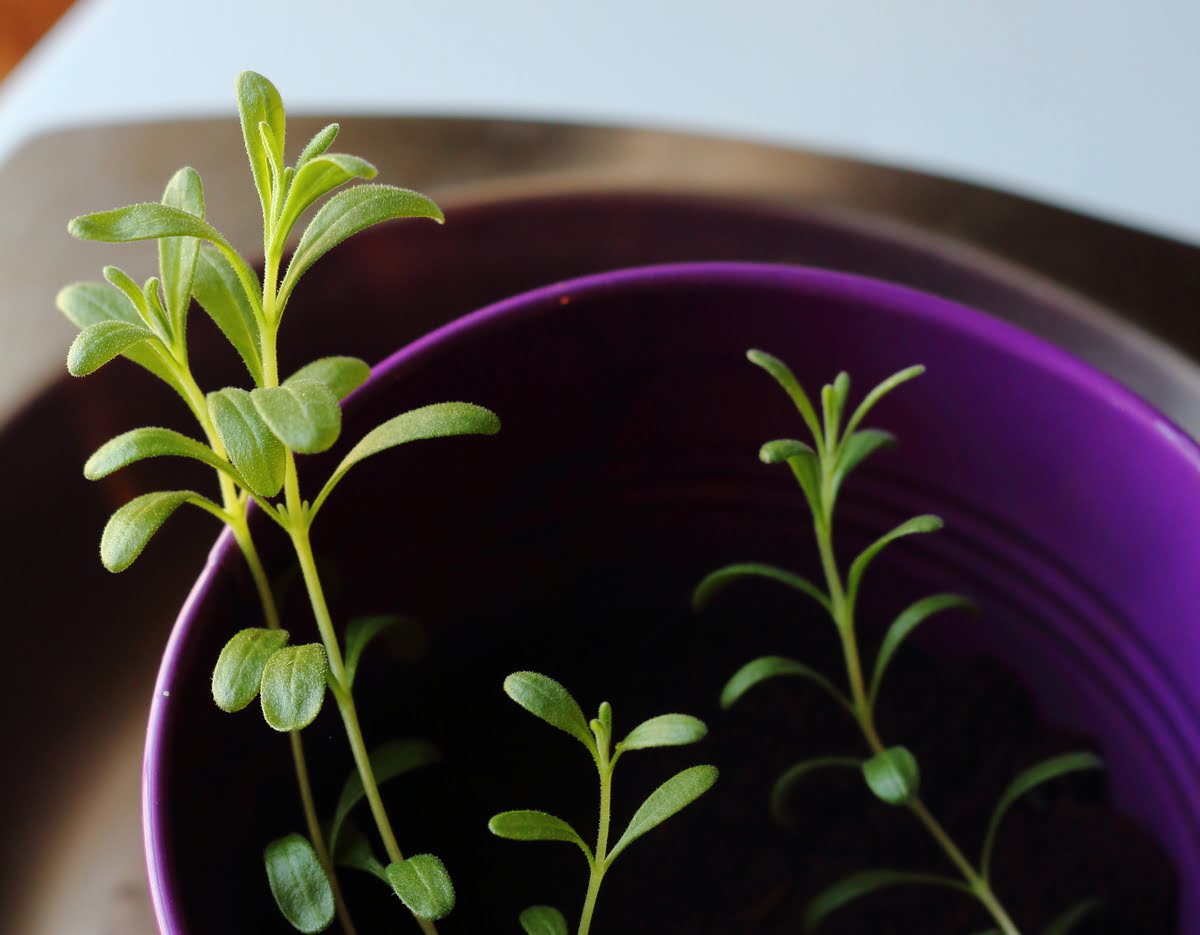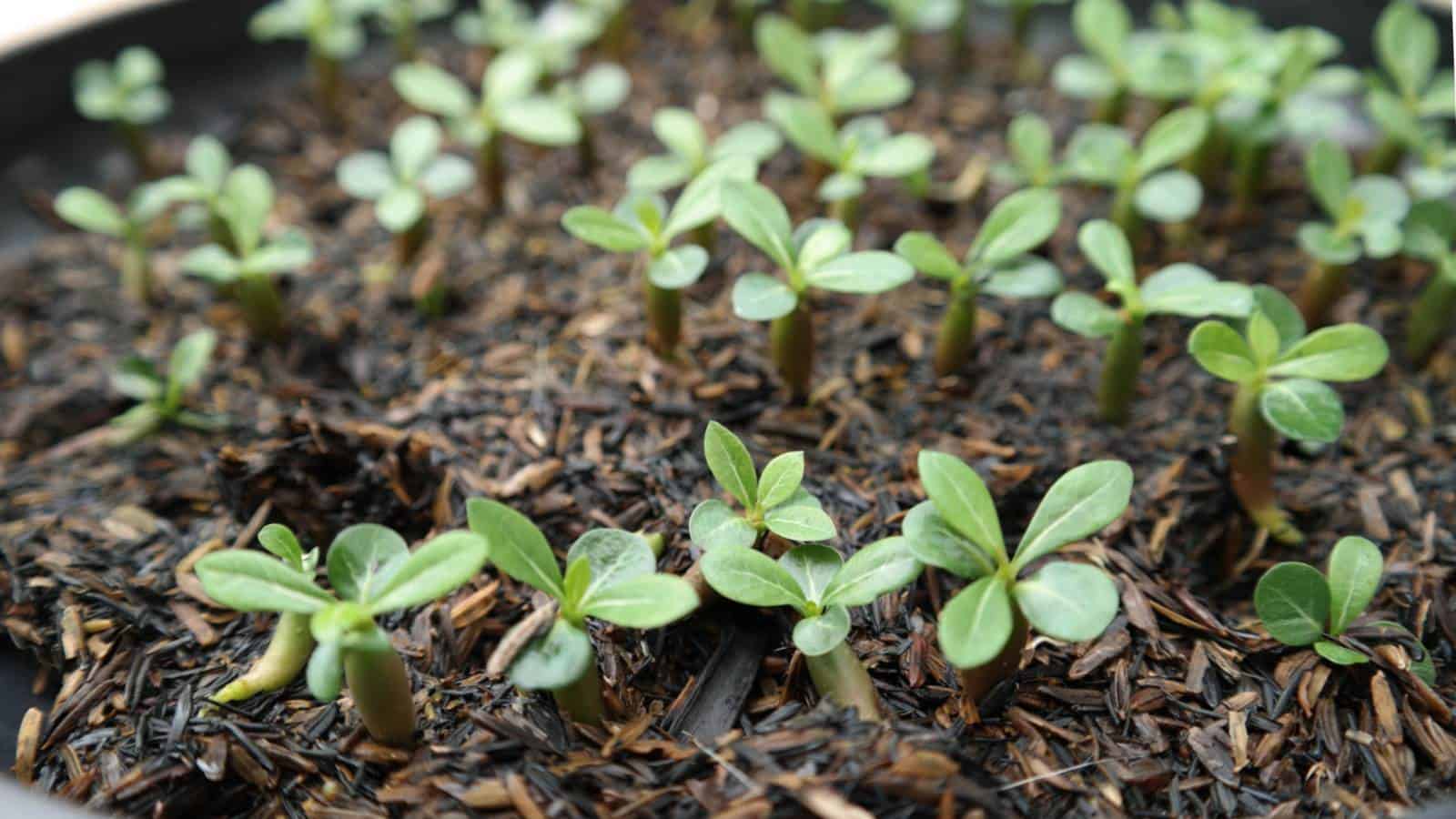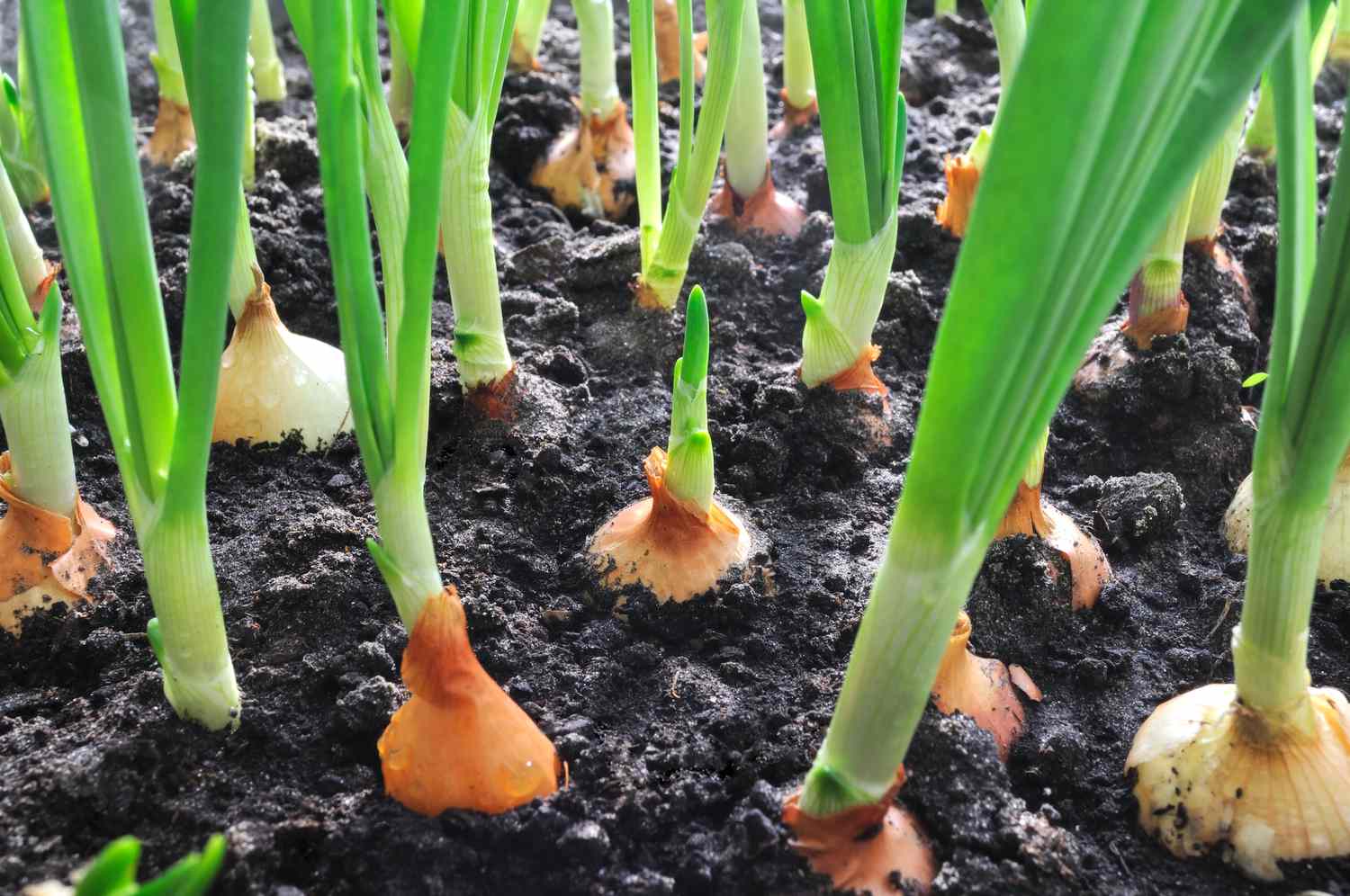Home>Gardening Tips and Tricks>Maximizing Yield>When To Transplant Seedlings To Hydroponics
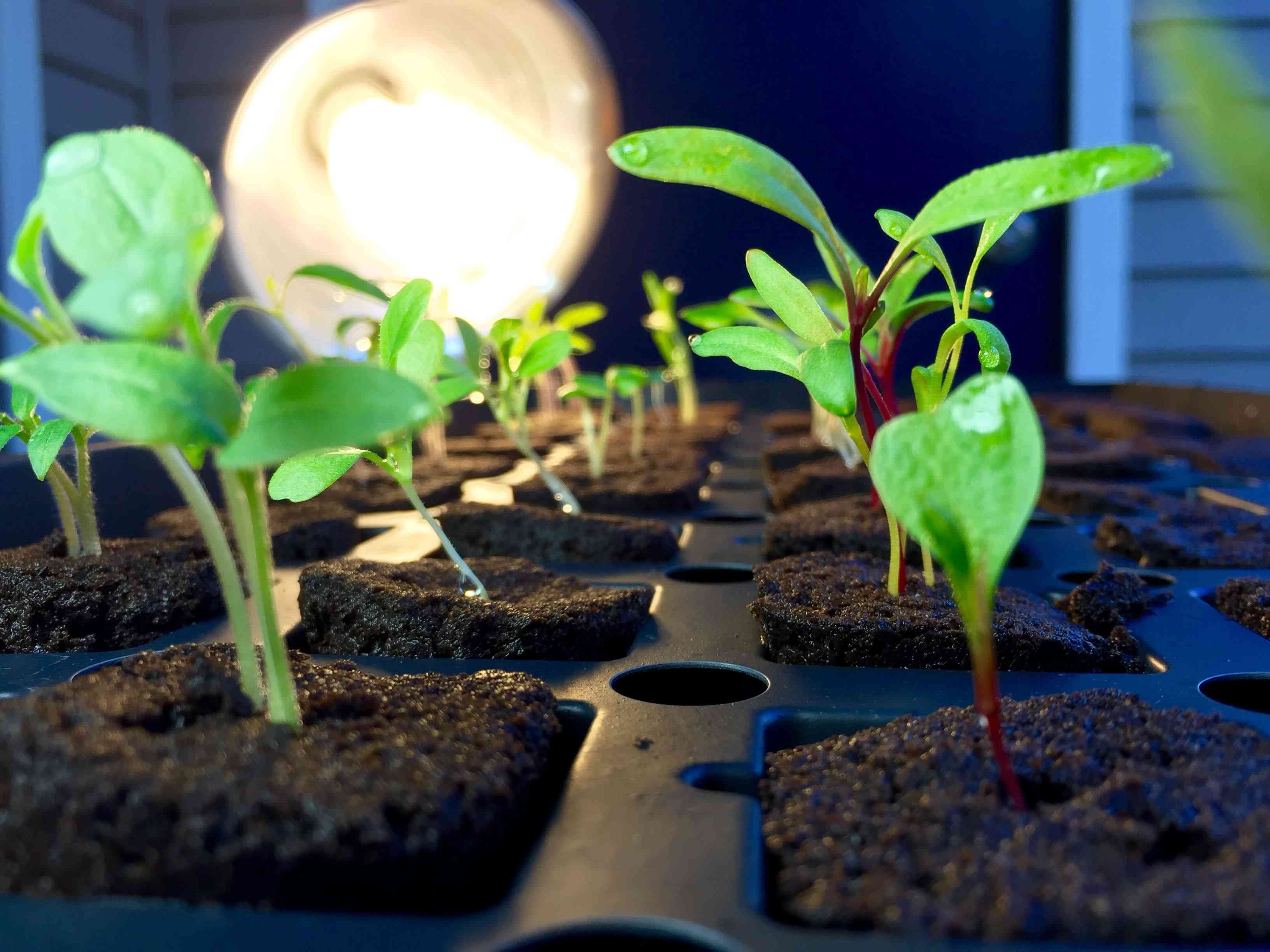

Maximizing Yield
When To Transplant Seedlings To Hydroponics
Modified: January 22, 2024
Discover the best time to transplant seedlings to hydroponics for maximizing yield. Learn expert tips and strategies to boost your harvest with this essential guide.
(Many of the links in this article redirect to a specific reviewed product. Your purchase of these products through affiliate links helps to generate commission for Chicagolandgardening.com, at no extra cost. Learn more)
Table of Contents
- Introduction
- Understanding Hydroponics
- Benefits of Transplanting Seedlings to Hydroponics
- Factors to Consider Before Transplanting Seedlings
- The Best Time to Transplant Seedlings to Hydroponics
- Step-by-Step Guide to Transplanting Seedlings to Hydroponics
- Care and Maintenance After Transplanting
- Troubleshooting Common Issues in Transplanting Seedlings to Hydroponics
- Conclusion
Introduction
Hydroponics, a method of growing plants without soil, has gained popularity among gardeners and farmers worldwide. This innovative technique allows for greater control over environmental factors, leading to higher yields, faster growth, and fewer pest problems. One key aspect of successful hydroponics is the transplanting of seedlings. Transplanting seedlings from traditional soil-based methods to a hydroponic system can maximize yield potential and ensure the plants thrive in this unique growing environment.
But when is the best time to make the switch? How do you go about transplanting seedlings to hydroponics? And what factors should you consider before making the transition? In this article, we will explore the answers to these questions and provide a step-by-step guide to help you successfully transplant your seedlings to a hydroponic setup.
Whether you are a seasoned hydroponics enthusiast or just starting your journey into this exciting growing technique, understanding the process of seedling transplantation is crucial. By gaining insight into the benefits, considerations, and timing of this important step, you can set yourself up for success and optimize the yield potential of your hydroponic garden.
Understanding Hydroponics
Hydroponics is a soilless gardening method that involves growing plants in a nutrient-rich water solution. Instead of relying on traditional soil, plants in hydroponic systems receive their essential nutrients directly from the water, allowing for faster and more efficient absorption. This method provides plants with a controlled environment, optimizing their growth and development.
In hydroponics, plants are typically placed in a growing medium to provide stability and support for the roots. Common growing mediums include perlite, coconut coir, rockwool, and clay pellets. These mediums are porous, allowing for adequate air circulation around the roots while still retaining enough moisture.
Unlike traditional gardening methods, hydroponics eliminates the potential for soilborne diseases and pests, providing a clean and sterile environment for plant growth. Nutrient deficiencies and imbalances can also be easily monitored and corrected in hydroponic systems.
Hydroponics can be practiced in various setups, including nutrient film technique (NFT), deep water culture (DWC), aeroponics, and vertical farming. Each method has its own benefits and requirements, but they all share the common principle of delivering nutrients directly to the plant roots through a water-based solution.
There are several advantages to using hydroponics for cultivating plants. First and foremost, it allows for maximum control over the growing conditions, including temperature, pH levels, nutrients, and lighting. This increased control enables plants to reach their full potential, resulting in faster growth and higher yields compared to traditional soil-based gardening.
Additionally, hydroponics requires less water than conventional gardening methods, making it an environmentally sustainable option. The water used in hydroponics is recirculated and can be reused, minimizing water waste.
Overall, hydroponics offers a versatile and efficient way to grow a wide range of plants, from leafy greens and herbs to fruits and vegetables. With a solid understanding of hydroponic principles and techniques, you can harness the full benefits of this innovative gardening method and achieve impressive results in your own hydroponic garden.
Benefits of Transplanting Seedlings to Hydroponics
Transplanting seedlings from traditional soil-based methods to a hydroponic system offers a range of benefits that can greatly enhance the growth and productivity of your plants. Here are some key advantages:
- Optimized Nutrient Absorption: In a hydroponic system, plants receive their nutrients directly from the water solution. This allows for precise control over nutrient levels, ensuring that the plants have all the necessary elements for optimal growth. As a result, seedlings transplanted to hydroponics can absorb nutrients more efficiently, leading to faster growth and higher yields.
- Increased Water Efficiency: Hydroponic systems use water more efficiently compared to traditional soil-based methods. The water in the system is recirculated, reducing overall water consumption while still providing plants with the necessary hydration. This is particularly beneficial in areas with limited water resources or regions prone to drought.
- Elimination of Soilborne Diseases: Soilborne diseases, such as fungi, bacteria, and pests, can wreak havoc on plants and significantly reduce crop yields. By moving seedlings to a hydroponic system, you eliminate the risk of soilborne diseases altogether. The sterile environment of hydroponics promotes healthier plant growth, leading to a lower chance of disease outbreak and higher overall plant vigor.
- Space Efficiency: Hydroponic systems are designed to maximize space utilization. Vertical farming, for example, allows for growing plants in stacked layers, making efficient use of vertical space. This is especially advantageous in urban settings or areas with limited land availability. Transplanting seedlings to hydroponics enables you to grow a larger number of plants in a smaller area, increasing your overall yield potential.
- Pest Control: Hydroponics reduces the risk of pest infestations. Without soil, it is more difficult for pests and insects to establish themselves in the growing system. Additionally, since hydroponics uses controlled environments, it’s easier to implement preventive measures and monitor for any signs of pests. This leads to healthier plants and reduces the need for pesticides, resulting in safer and more eco-friendly cultivation.
By transplanting seedlings to hydroponics, you can take advantage of these benefits to maximize the growth and productivity of your plants. Whether you are an experienced grower or a beginner, exploring the world of hydroponics can open up new possibilities for successful and sustainable gardening.
Factors to Consider Before Transplanting Seedlings
Before transplanting seedlings from traditional soil-based methods to a hydroponic system, it’s important to consider several factors to ensure a successful transition. Here are some key considerations:
- Plant Health: Ensure that your seedlings are healthy and free from any diseases or pests. Unhealthy plants will have a harder time adapting to the new growing environment, so it’s crucial to select robust seedlings with strong root systems.
- Root Development: Seedlings in hydroponics rely on a well-developed root system to absorb nutrients efficiently. Before transplanting, make sure your seedlings have healthy and well-established roots. This can be indicated by strong white roots visible through the bottom of the nursery pots.
- Hydroponic System Readiness: Prepare your hydroponic system in advance to ensure it’s fully operational and ready to receive the transplanted seedlings. This includes setting up the appropriate water and nutrient solutions, ensuring proper pH levels, and testing the system for any leaks or malfunctions.
- Environmental Conditions: Consider the environmental conditions within your hydroponic system and ensure they are suitable for the specific plants you are transplanting. Factors such as temperature, humidity, and lighting should be optimized to support healthy plant growth.
- Transition Strategy: Have a plan in place for the transition from soil-based gardening to hydroponics. Gradually acclimating seedlings to the new growing conditions can help prevent shock and ensure a smoother transition. This can involve gradually increasing the exposure to hydroponic solutions over a period of days or weeks.
- Timing: Choose the right time to transplant your seedlings. It’s generally recommended to transplant seedlings to hydroponics when they have reached a certain size and have a well-developed root system. This ensures that they can adapt quickly to the new growing environment and continue to grow without setbacks.
By considering these factors before transplanting your seedlings to a hydroponic system, you can set yourself up for success. Taking the time to properly assess and prepare for the transition will increase the likelihood of healthy plant growth and maximize the benefits of hydroponics in your gardening endeavors.
The Best Time to Transplant Seedlings to Hydroponics
Transplanting seedlings to a hydroponic system at the right time is crucial for their successful adaptation and optimum growth. While the precise timing can vary depending on the specific plant species and growing conditions, there are some general guidelines to consider:
Seedling Size: Seedlings should be at a suitable size for transplanting. They should have a well-established root system, with roots reaching the edges of the nursery pots or growing medium. This ensures that the seedlings can quickly adapt to the hydroponic environment and absorb nutrients efficiently.
Leaf Development: Look for seedlings with several mature leaves. Seedlings with a good number of healthy leaves are more likely to withstand the transplantation process and thrive in the hydroponic system.
Stem Strength: The stem of the seedling should be strong and sturdy. A strong stem indicates that the seedling has developed enough structural support to withstand the process of transplanting without wilting or bending excessively.
Root System Vigor: Check the root system of the seedlings. Ideally, the roots should be white and well-developed, with no signs of rot or disease. An extensive and healthy root system ensures that the seedlings can absorb water and nutrients effectively in the hydroponic system.
Climate and Growing Conditions: Consider the climate and growing conditions in your area. If you live in a region with extreme temperature fluctuations or harsh weather conditions, it may be better to wait for more stable conditions before transplanting. Similarly, ensure that the environmental factors in your hydroponic system, such as temperature, humidity, and lighting, are optimal for the seedlings’ growth.
Transplanting Plan: Have a well-defined plan for the transplanting process. This includes preparing the hydroponic system in advance, ensuring that the water and nutrient solutions are properly balanced, and providing the necessary support structures, such as trellises or stakes, if required. Having a plan minimizes stress on the seedlings and allows for a smoother transition into the hydroponic environment.
It’s important to note that while there are general guidelines for the best time to transplant seedlings to hydroponics, it’s always advisable to refer to specific plant care information and consult resources specific to your plant variety and system setup. Planting instructions and recommendations from seed suppliers or experienced hydroponic growers can provide valuable insights tailored to your specific needs.
By considering the size, leaf development, root system, environmental conditions, and having a well-thought-out transplanting plan, you can ensure the best time to transplant your seedlings to a hydroponic system, setting them up for a successful transition and optimal growth.
Step-by-Step Guide to Transplanting Seedlings to Hydroponics
Transplanting seedlings to a hydroponic system requires careful attention to detail and a systematic approach. Follow these steps to ensure a successful transplant:
- Prepare Your Seedlings: Make sure your seedlings are healthy and ready for transplantation. Ensure they have the appropriate size, leaf development, and a well-established root system.
- Prepare Your Hydroponic System: Ensure your hydroponic system is set up and functioning properly. Confirm that the water and nutrient solutions are balanced, pH levels are within the recommended range, and all necessary equipment and support structures are in place.
- Prep the Growing Medium: If using a growing medium, such as perlite or clay pellets, ensure it’s clean and free of any debris or contaminants. Rinse the medium thoroughly under running water if needed.
- Water the Seedlings: Water the seedlings thoroughly before transplanting to ensure they are well-hydrated. This helps reduce stress during the transplantation process.
- Remove Seedlings from Containers: Gently remove the seedlings from their nursery pots or containers, taking care not to damage the roots. If the seedlings are in a tray or cell pack, gently separate them without tearing the roots.
- Inspect and Trim Roots: Inspect the roots for any signs of damage or disease. Trim any excessively long or damaged roots with clean scissors or pruning shears. This encourages proper root growth in the hydroponic system.
- Place Seedlings in the Growing Medium: If using a growing medium, create a small hole or indentation in the medium and gently place the seedlings into position. Carefully surround the roots with the growing medium, ensuring they are supported without being overly compacted.
- Water and Secure Seedlings: Gently water the seedlings to settle the growing medium and provide initial hydration. Use a gentle stream or mist to avoid disturbing the roots. If necessary, secure the seedlings with stakes or trellises to provide support as they grow.
- Monitor and Adjust: After transplanting, closely monitor the seedlings for the first few days. Ensure that the hydroponic system is functioning correctly, and the seedlings are adapting well to their new environment. Adjust water, nutrient levels, and environmental conditions as needed.
- Maintain Care and Maintenance: Continue to care for and maintain your seedlings in the hydroponic system as per the specific requirements of your plant variety. Regularly monitor nutrient levels, pH, and lighting to ensure ideal growing conditions.
Transplanting seedlings to a hydroponic system requires patience and attention to detail. By following these step-by-step instructions, you can ensure a smooth transition and provide the best possible growing conditions for your seedlings in their new hydroponic environment.
Care and Maintenance After Transplanting
After transplanting your seedlings to a hydroponic system, proper care and maintenance are crucial to ensure their continued growth and success. Here are some important steps to follow:
- Monitor Nutrient Levels: Regularly check and maintain the nutrient levels in your hydroponic system. Follow the recommended nutrient schedule for your specific plant variety. Adjust the nutrient solution as needed to meet the growing demands of your plants.
- Monitor pH Levels: Keep a close eye on the pH levels of the water in your hydroponic system. The optimal pH range varies depending on the plant species, but typically falls between 5.5 and 6.5. Adjust the pH of the nutrient solution using pH-up or pH-down solutions as necessary.
- Provide Adequate Lighting: Ensure that your hydroponic system has adequate lighting for the specific light requirements of your plants. Position lamps or LEDs at the appropriate distance from the plant canopy to provide optimal light intensity.
- Ensure Sufficient Air Circulation: Proper air circulation is crucial for healthy plant growth. Use fans or other ventilation systems to ensure adequate airflow around the seedlings. Good ventilation helps prevent the buildup of excess moisture and reduces the risk of mold or fungal growth.
- Monitor Water Levels: Regularly check the water level in your hydroponic system. Ensure that there is enough water to cover the roots without submerging them completely. Maintain proper water levels to ensure the seedlings receive adequate hydration while avoiding overwatering.
- Prune and Train: As your seedlings grow, prune any dead or damaged leaves to promote better plant health. Additionally, consider training techniques such as topping or tying branches to encourage bushier growth and better light penetration.
- Monitor for Pests and Diseases: Regularly inspect your seedlings for signs of pests or diseases. Implement preventive measures such as maintaining cleanliness, using organic pest control methods, and regularly removing any fallen leaves or debris from the hydroponic system.
- Regular Maintenance: Periodically clean and maintain your hydroponic system to ensure its optimal functioning. This includes cleaning growth surfaces, checking and repairing any leaks, and replacing any worn-out equipment or components.
- Record Keeping: Keep a record of the progress of your seedlings. Note down important details such as transplant date, growth milestones, and any observations or adjustments you make along the way. This record can help you analyze and optimize your hydroponic gardening practices in the future.
By consistently following these care and maintenance steps, you can create an optimal growing environment for your seedlings in the hydroponic system. Regular monitoring, adjustments, and preventive measures will help ensure the long-term health and success of your hydroponic garden.
Troubleshooting Common Issues in Transplanting Seedlings to Hydroponics
Transplanting seedlings to a hydroponic system can sometimes present challenges and issues that require troubleshooting. Here are some common issues you may encounter and how to address them:
- Transplant Shock: Transplant shock can occur when seedlings undergo stress during the transplantation process. To minimize this, ensure seedlings are well-hydrated before transplanting, and gradually acclimate them to the hydroponic system by exposing them to the new environment for increasing periods of time before transplanting.
- Wilting: If seedlings start to wilt after transplanting, it could indicate a lack of water or nutrient uptake. Check the water level in the system and adjust as necessary. Also, double-check the nutrient solution strength and pH levels to ensure they are within the appropriate range for your plants.
- Nutrient Deficiencies or Imbalances: Monitor the appearance of your plants for signs of nutrient deficiencies or imbalances, such as yellowing leaves or stunted growth. Adjust the nutrient solution accordingly, making sure to follow recommended guidelines for your specific plant variety.
- Root Rot: Root rot can occur if the roots are consistently in an overly wet or poorly aerated environment. Ensure proper water and air circulation in your hydroponic system and consider adding beneficial bacteria or enzymes designed to prevent or combat root rot.
- Pest Infestations: Take preventive measures to minimize the risk of pest infestations. Inspect your seedlings regularly and promptly address any signs of pests such as spider mites, aphids, or fungus gnats. Use organic pest control methods if possible to avoid chemical contamination in your hydroponic system.
- pH Imbalances: Fluctuations in pH levels can affect nutrient uptake and overall plant health. Regularly monitor and adjust the pH of the nutrient solution to the appropriate range for your plants. A pH testing kit or pH meter can help you accurately measure and maintain the desired pH levels.
- Inadequate Lighting: If your seedlings are not receiving adequate light, they may exhibit weak or leggy growth. Ensure that your lighting setup provides the appropriate intensity and duration for your plants’ specific light requirements. Adjust the distance and duration of the lights as needed.
- Overcrowding: If seedlings are overcrowded in your hydroponic system, they may compete for resources and hinder each other’s growth. Thin out the seedlings if necessary to allow for proper spacing and airflow. This will help prevent the spread of disease and ensure each seedling has enough room to grow.
- Environmental Factors: Keep an eye on environmental factors such as temperature, humidity, and airflow. Ensure that they are within the optimal range for your plants’ growth. Make any necessary adjustments to maintain a consistent and suitable growing environment.
When troubleshooting issues in transplanting seedlings to hydroponics, it’s important to address the specific needs of your plants and make adjustments accordingly. Regular observation, proper maintenance, and timely interventions will help you overcome common issues and ensure the health and success of your seedlings in the hydroponic system.
Conclusion
Transplanting seedlings from traditional soil-based methods to a hydroponic system can open up a world of possibilities for maximizing plant growth and yield. By understanding the principles of hydroponics, considering the factors involved in transplantation, and following a systematic approach, you can successfully transition your seedlings to a hydroponic setup.
Hydroponics offers numerous benefits, including optimized nutrient absorption, increased water efficiency, and a reduced risk of soilborne diseases. Additionally, hydroponics allows for space efficiency, better pest control, and the ability to grow a wide range of plants in various setups.
Before transplanting seedlings, it’s essential to ensure their health, assess their root development, and prepare your hydroponic system for their arrival. Timing is crucial, and selecting the right time when seedlings are the appropriate size and have well-developed roots sets the stage for success.
Once the transplantation process is complete, properly caring for and maintaining the transplanted seedlings is key. Regularly monitor nutrient and pH levels, provide adequate lighting and airflow, and address issues such as pests or diseases promptly.
In the event of challenges, troubleshooting common issues such as transplant shock, wilting, nutrient imbalances, and environmental factors is crucial in solving problems and ensuring the health and growth of your plants.
With proper care, attention, and knowledge, transplanting seedlings to hydroponics can lead to thriving plants, higher yields, and a rewarding gardening experience. So, dive into the world of hydroponics, maximize the potential of your seedlings, and watch your plants flourish in this innovative and efficient growing method.
